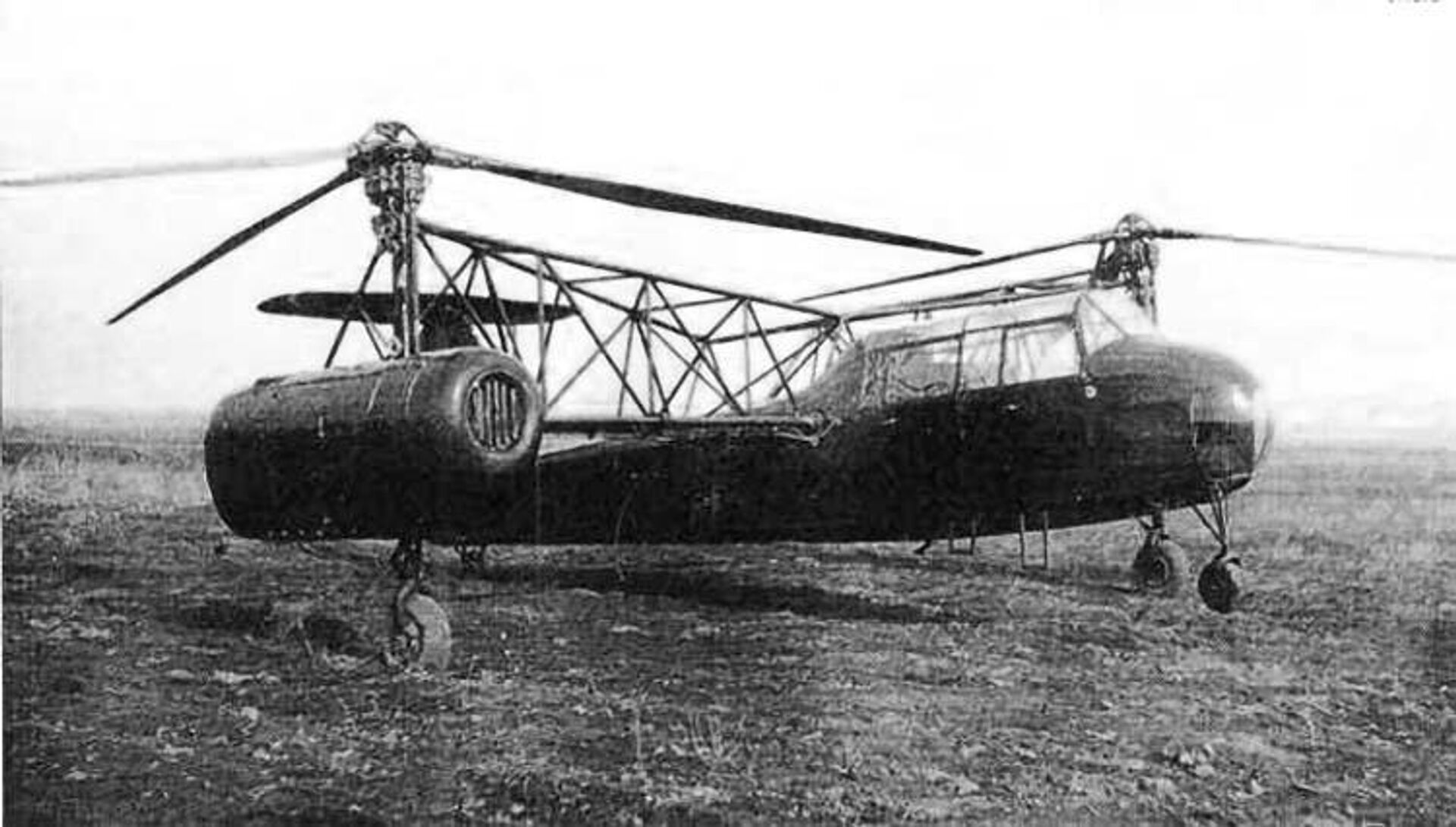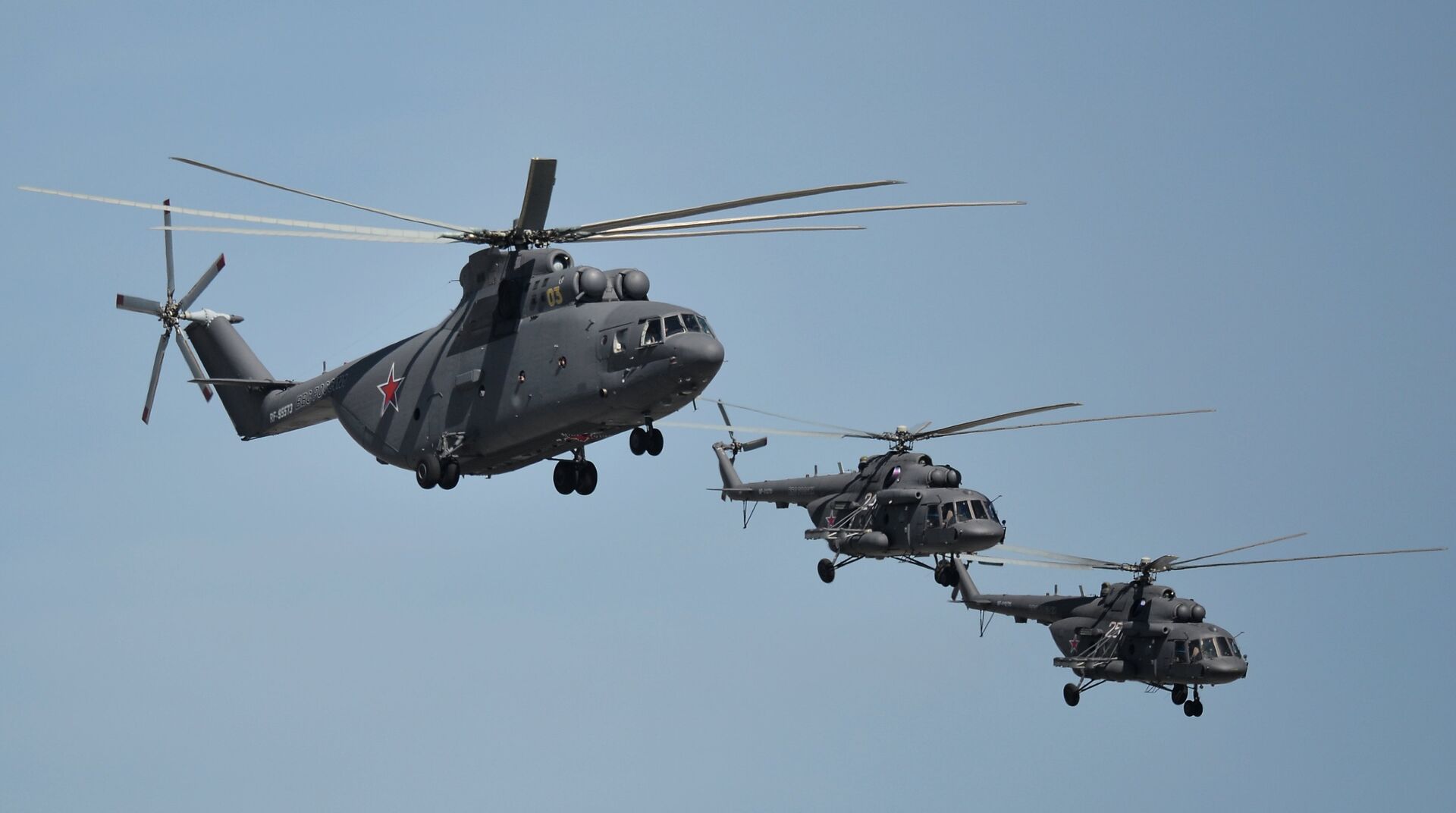Russian Army Aviation Day: 75 Years of Air Support for Russia’s Ground Forces
16:20 GMT 28.10.2023 (Updated: 16:25 GMT 28.10.2023)

© Sputnik / Ministry of Defence of the Russian Federation
/ Subscribe
Saturday is Army Aviation Day, the professional holiday dedicated to the military aviators responsible for providing the closest forms of support to Russia’s ground forces. What are the service branch’s origins and history? And what has the conflict in Ukraine shown about their relevance going forward? Sputnik explores.
Seventy-five years ago, on October 28, 1948, an aviation training squadron in the Moscow region town of Serpukhov became the first Soviet military unit to be equipped with helicopters. The unit, officially known as the 26th Separate Training Aviation Squadron, was manned by a mix of fighter and attack aircraft pilots who fought in World War II, and a crop of young ace pilots who proved their worth in training flights flying the Ilyushin Il-2 and Il-10 ground attack aircraft.
Laying the foundation for a future Army Aviation force as a separate branch of the military, the 26th Squadron’s pilots had their work cut out for them, having to learn to operate the helicopter – a technology then in its infancy.
The unit’s first helicopters included the G-3, the G-4 and the G-5, all of them variants of the experimental twin-rotor-equipped Omega one-man helicopter design created in 1941 by the OKB-3 design bureau for fire support missions. The helicopters proved wonky, dangerous, and difficult to operate, offering all the expected teething pain associated with the creation and operation of new equipment.

The Bratukhin Omega - one of the USSR's first helicopters.
© Photo : airwar.ru
Initially, the new helicopter-borne aviation formations were dubbed ‘Auxiliary Aviation’, with their missions including reconnaissance, transport, communications support and fire correction.
Over time, as the legendary Soviet design bureaus including Mil and Kamov amassed technical knowhow and began to develop faster, heavier, more maneuverable and all-round more advanced rotary-wing aircraft, the duties of auxiliary aviation gradually began to include direct fire support, with the Mil Mi-1 light utility helicopter, which entered into service in 1950, offering a taste of what rotary wing aircraft of the future could achieve.
The introduction of the Mil Mi-24 helicopter gunship in 1972 marked another turning point in Auxiliary Aviation’s transformation into Army Aviation, with the Mi-24’s heavy firepower, combined with the transport and logistical support provided by the Mi-8 transport helicopter – introduced five years earlier, demonstrating for the first time the capabilities of rotary-wing aircraft to ensure ground troops’ mobility and provide them with heavy fire support.
From the 1970s onward, Army Aviation became an indispensable part of Soviet (and later Russian) military operations and planning, from large-scale training exercises across the USSR and Eastern Europe in preparation for NATO aggression, to the 1980s War in Afghanistan, to the post-Soviet conflicts in Chechnya, Georgia, Syria, and most recently, Ukraine.

Mi-8, Mi-24 helicopters in flight near Kabul, Afghanistan (File)
© Sputnik / A. Solomonov
/ After the collapse of the USSR in 1991 and the reorganization of the Russian military, Army Aviation was split off from the Air Force, renamed Ground Forces Aviation and became a part of the ground forces. Ground Forces Aviation was reincorporated into the Russian Air Force in 2003, with the latter merging with the Aerospace Defense Forces and the Air Defense Troops in 2015 to become the Russian Aerospace Forces.
Today, the Russian Aerospace Forces’ Army Aviation units are equipped with several thousand helicopters of various classes, from the aforementioned Mi-24 and Mi-8 workhorse choppers, to the Kamov Ka-50 and Ka-52 attack helicopters with their distinctive coaxial rotor system, to Mil Mi-26 super heavy transport helicopters – powerful enough to literally carry other aircraft, to tiny Kamov Ka-226 light utility helicopters – whose passenger and carrying capacity is roughly equivalent to that of a small van.
“Russia, and before that, the Soviet Union have built legendary military aircraft throughout the history of human aviation,” Brian Berletic, a former US Marine-turned independent geopolitical researcher and writer, told Sputnik.
“Today, Russian military aviation has provided Russian forces with a decisive edge during the ongoing Special Military Operation (SMO),” the observer noted, pointing, for example, to the “key role” played by Ka-52s in “blunting Ukraine’s much-vaunted spring 2023 offensive.”
“Together with its power and range, long-range guided missiles allow the Ka-52 to strike at Ukraine’s collection of NATO armor from a relatively safe distance beyond the man-portable anti-aircraft weapons that would have inhibited lesser aircraft,” Berletic said.
“Russian military aviation has played a central role in the SMO,” according to the analyst, with its significance increasing with time “as Ukraine’s air defenses are worn down by long-range cruise missiles and drone strikes including those carried out by the Russian Aerospace Forces.”
“It is important to remember that military aviation is just one part of a much larger combined arms effort, and that no single ‘wonder weapon’ can turn the tide of a conflict or end a war. That said, Russian military aviation has proven itself capable of taking on NATO-trained troops including those operating the latest NATO air defense systems. Together with Russia’s massive military industrial base, Russian military aviation plays a central role in defending Russia and adding greater balance to the global order,” Berletic summed up.




